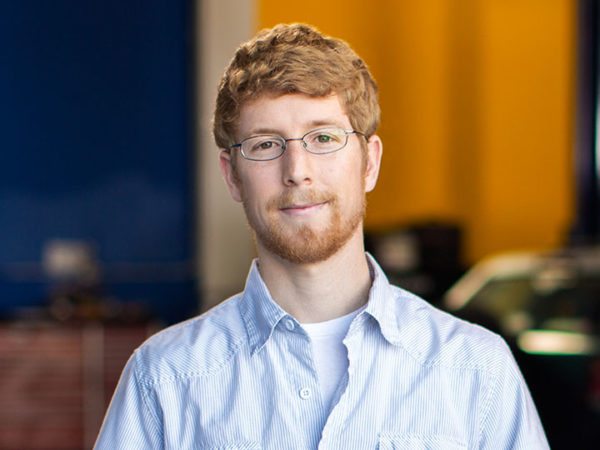
There’s no doubt about it. Charging by the day (or hour) is a popular practice in the creative industry, but I think it should be reconsidered as a standard.
I’ve been on both sides of the fence, as a freelancer who has charged a day rate, and as a business owner who has paid a day rate. My experiences have prompted me to avoid using it in our business. Keep in mind, this is written from the perspective of someone who is interacting with clients directly, for the most part. I realize that those of you working with studios and agencies will have convincing rebuttals, but I think this is a healthy conversation to have regardless. Let’s get to it.
1.) It promotes commoditization.
Charging by the day (or hour) allows us to avoid discovering the true value of what we’re providing and reduces it to the lowest common denominator: time. This can promote a psychology of time being more important than the value of the end product we’re creating. Even if we don’t believe that to be true, I think it’s important to know that the method we use for billing is part of the stance and attitude we take towards a project and our work in general. Clients read into that. Even if it’s just a perception, it’s still a big one. Generally, I think studios and agencies are advocates of day rates because it’s easier to throw more man hours at a job, rather than planning to do it right the first time; which is a terrible business model. When being hired for a span of days, it can also create the perception that clients are able to dictate how you work during those days, like an employer would.
2.) Creativity is not effective in the 9-5 format.
Are you the most creative when working in 8 hour chunks? If so, I think you’re in the minority. Unfortunately, most people under the day rate structure are even expected to work 10+ hour days! That’s insane to me. How productive can you be when working 10+ hours (in a row) on a creative project? My brain turns to mush after a 3-4 hour session. Most would agree that creativity and motivation strike at different times of the day, and those times are different for everyone. We should be taking advantage of that and not force creatives to work in a boxed time schedule. If your answer is, “Well, I don’t actually work a full 8 hour day, even though I’m charging a day rate.” then I would argue that it’s a misleading way to charge for your services to begin with.
We should have more conviction about what our work is worth by placing focus on the end product, not the daily grind.
3.) There’s less tolerance for creative risks.
Charging by the day creates a natural deadline, decided by the budget. For instance: Imagine a client has $5,000 to create an animation and we charge $1,000/day. It’s already been figured that we’ll spend 5 days on the project. No more, no less. In my opinion, that puts creativity in a chokehold. When we’re being creative, we’re trying things that are probably unproven and untested. We’re traveling down a road of uncertainty with the hopes of creating something that other people will appreciate for it’s originality. Success is not always guaranteed. It’s impossible to be truly creative without taking risks. And failure, when it happens, costs time. Most of us already know this and have avoided risks in order to meet deadlines. For example, when you’re given a budget that allows for 5 days of work, would you ever spend 2 days attempting a design style that you’ve never tried before? Probably not. You go for the usual tools in your arsenal. Which leads to stagnation. Or, let’s say you’re the courageous one who does take a risk on a new design style; sometimes you’ll create the best piece of your portfolio, other times you’ll fail and have to start over. Should the client pay for that? Should the same type of project be more expensive to a new client because there were more creative failures than the first time? Personally, I don’t think so. As artists we generally understand creative risks better than the client ever will. We know the methods, we know the technology, and sometimes these risks are as simple as trying out a new plug-in; which is actually quite important for improving our craft. My point is, it’s not worth communicating every possible risk to a client, but in the same respect, I don’t think it’s good practice to charge them for the ones that fail either. Deep down, I think you agree with that, which is why sometimes we get stuck playing it safe.
See post: Why Selling Your Time Isn’t Enough
4.) It creates unpredictable costs.
When quoting by the day, the best you can do is estimate how long it will take to finish the project. Unfortunately for the client, they know the price can only go up from there. Let’s be honest, if you finished a job faster than planned, would you discount the original quote? If not, then maybe subconsciously you already know that charging by time spent isn’t the best method for you. In the same regard, if the project takes more time (whether or not it’s the client’s fault), you would bill for it. Right? Because of this, it can be difficult for a client to figure out what their money will buy them, and to me that is not conducive to a thriving relationship with your customers. I think this scenario is what can cause anxiety for some studios and agencies, which is why they demand the 10+ hour days. Perhaps they’re worried it’s the only way they can deliver on promises to clients of their own.
What do we use?
For all the reasons above, we use flat rates. Both with freelancers and our clients. This method provides four very powerful benefits: (1) allows us to adjust our creative risk tolerance on a per project basis, (2) it gives the client confidence that they’ll receive a quality product for a specific price, (3) it takes the looming question marks out of pricing as the job goes on*, (4) it allows our freelancers to do their best work at a realistic pace.
*Some projects may change directions (known as “scope creep” in the industry), but that is an entirely different discussion, and your client agreement should address how that situation will be handled if it arises.
Yes, this was more work at first. It required time to calculate the value of everything included with a flat rate, and a detailed contract that spells out the provided services, scope and process for additional changes. However, I believe we owe this to our clients and ourselves: a predictable structure that allows everyone to see what can be created for a certain price, without the typical “it depends” response. By the way, I know why we say that as designers, but it can be frustrating to hear as the first response. Sometimes we put too much energy into explaining several scenarios, rather than starting from a baseline example with a baseline price and going from there.
However, I ultimately believe we should have more conviction about what our work is worth by placing focus on the end product, not the daily grind.
4 Comments
-
With the flat rate, what happens if you want to sack the client due to unreasonable demands for amends? Not scope creep per se, but just a very fickle client. Ordinarily you could bill for hours worked so far, but if you’re not delivering the finished product as agreed, what then?
-
You should have protections for this situation in your Statement of Work, such as receiving a non-refundable deposit before works begin. I wouldn’t recommend cutting off the project entirely unless the relationship is completely toxic and there is no agreement on how to proceed. I believe it’s important to use every customer interaction as an opportunity to go above and beyond, so they have no choice but to share their positive experience with others. That’s the secret to going viral. 🙂
-
Pingbacks
-
[…] I’ve seen rates range from $150 to $800 a day depending on skill level. Another popular route is to use a flat rate based on the project’s complexity. Stay flexible at the beginning, but as you start to get […]
-
[…] See post: 4 Reasons Day Rates Are Hurting Creative Services […]
[…] I’ve seen rates range from $150 to $800 a day depending on skill level. Another popular route is to use a flat rate based on the project’s complexity. Stay flexible at the beginning, but as you start to get […]
[…] See post: 4 Reasons Day Rates Are Hurting Creative Services […]




